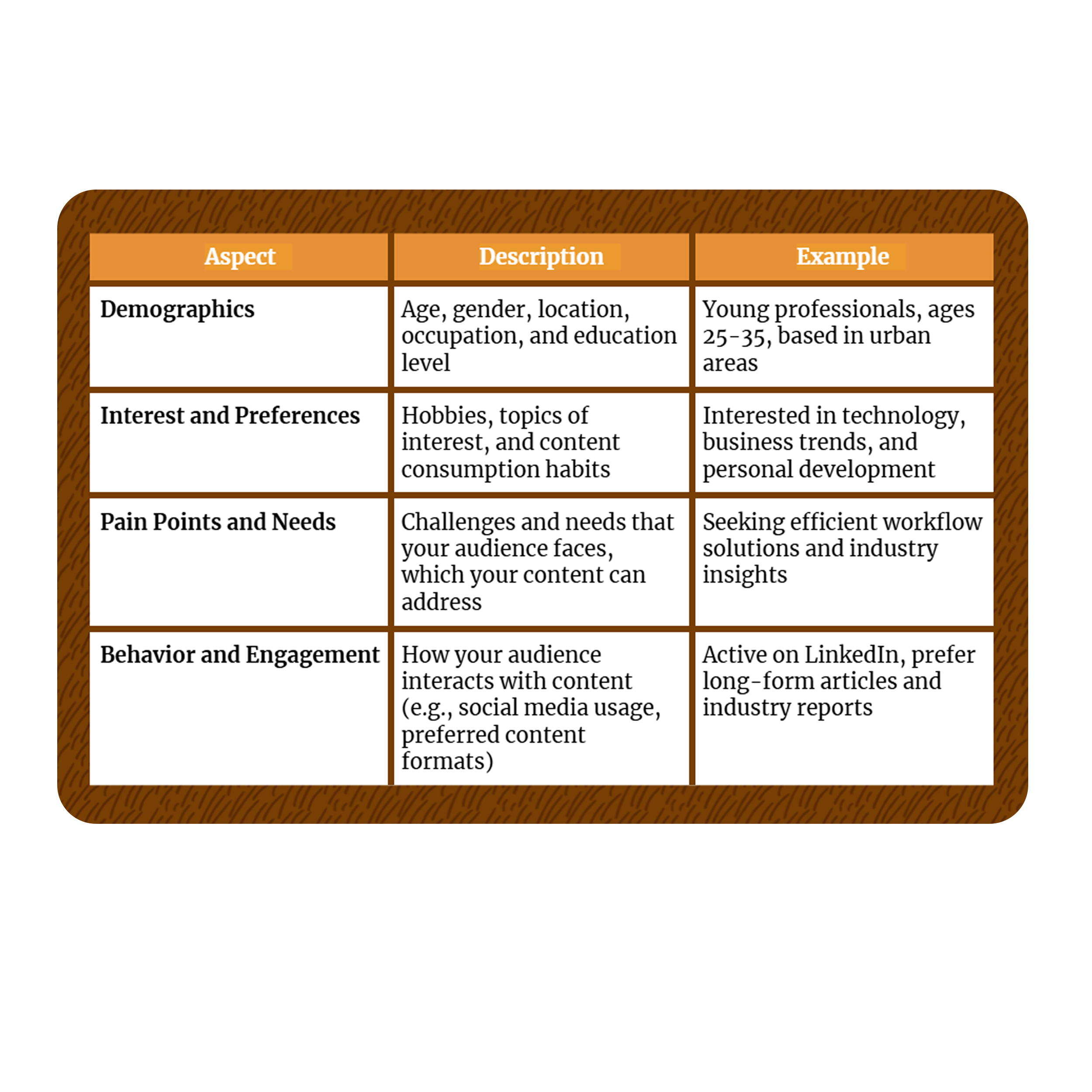Standing out in the crowded digital space isn’t easy.
With 82% of marketers curating content and 41% seeing a boost in high-quality leads, content curation is more than just a trend—it's a strategic necessity. However, due to limited time and resources, many businesses hit roadblocks when consistently producing engaging and relevant content, including logo design.
Read on to learn more about building a smart content curation strategy that keeps you engaged with your audience and enhances your marketing efforts.
What is content curation?
Content curation is all about gathering and organizing information on a specific topic to make it easily accessible and helpful for your audience. Instead of creating new content from scratch, you select and compile the best existing content.
It saves your audience time by filtering the noise and delivering only the most valuable insights. Plus, it can boost engagement and traffic to your site by offering a comprehensive resource on a given topic.
What is curated content?
It refers to the content selected and organized through content curation – the end product of content curation. Some examples of curated content include:

- News Aggregators
Websites like AMA Daily pull together articles on current events from various sources, allowing users to see multiple perspectives on a topic in one place.

- Social Media: Social media platforms like Twitter often curate content through hashtags or curated lists, bringing together posts and updates related to specific themes or industries.

- Email Newsletters: Many companies send newsletters featuring a roundup of blog posts, articles, or industry news. For example, LinkedIn is one of the few social networks where long-form texts work well. Sharing your opinions can spark debates and drive engagement, as others want to share their perspectives.
Benefits of Content Curation for Businesses
Content curation can be a game-changer for businesses looking to enhance their online presence. Here’s how it can benefit your company:
- Establishes Authority: By curating and sharing high-quality content, you position your business as a knowledgeable leader in your industry.
- Saves Time: It helps streamline content creation by aggregating relevant information, freeing time for other tasks.
- Engages Audience: Providing valuable, curated content encourages interaction and discussion, boosting engagement with your brand.
- Builds Trust: Consistently sharing trusted and valuable information fosters credibility and strengthens relationships with your audience.
Step-by-Step Guide on How To Create a Content Curation Strategy for Your Business
Creating a content curation strategy can help streamline your content efforts and boost your brand’s visibility. Check out our step-by-step guide on how to curate content that works for your business:
1. Setting Your Content Curation Goals
It’s crucial to set clear goals to guide your content curation strategy. Here’s how to get started:
a. What’s the purpose of your curation content?
Begin by determining what you want to achieve with your content curation. Are you aiming to position yourself as a thought leader in your industry, drive website traffic, or increase social media engagement? Clarifying your purpose will help you focus your efforts and measure success.
For example, if you aim to build brand authority, you might focus on curating high-quality, industry-specific content showcasing your expertise.
b. Identify your target audience
Research who your audience is, including their interests, challenges, and where they consume content. Knowing your audience allows you to select and share content that resonates with them and adds value to their experience.
Check out the guide table below:

c.Determine the ideal curation-to-creation ratio
While curation helps you provide valuable information quickly, original content allows you to showcase your unique voice and insights. Decide on a ratio that works for your business—whether that’s 70% curated content and 30% original or another mix.
2. Researching and Identifying Content Sources
Once you’ve set your content curation goals, the next step is to research and identify the best sources for your content.

- Establish content pillars: Start by defining your content pillars—these are the main topics or themes your content will focus on. They are the core areas most relevant to your audience and align with your business objectives.
- Find reliable content sources: Find reliable sources that provide high-quality content within your established pillars. Seek reputable websites, industry blogs, and thought leaders known for their expertise and credibility in creating interactive content. Avoid sources that lack authority or regularly produce low-quality content. You can also use web content filtering software to automatically block unreliable or irrelevant sources, helping ensure your curated content meets quality standards.
- Use Tools for Content Discovery: Tools like Feedly, Google Alerts, and BuzzSumo can help you find trending content and monitor relevant topics. These tools can save you time and ensure you’re always on top of the latest and most relevant content.
3. Developing Your Curation Process
Now that you’ve identified your content sources, it’s time to develop an effective curation process. But how?
You can start by sifting through your gathered content to identify what is most relevant and valuable to your audience. Focus on quality over quantity—choose pieces that align with your content pillars and offer fresh insights or valuable information.
Once you’ve chosen, simply sharing content isn’t enough; adding your commentary or insights can significantly enhance its value. Briefly explain why you chose the content, what makes it noteworthy, or how it relates to current trends or challenges.
For instance, when using a Pinterest Pin to share your curated content, adding a personal touch can make it more engaging and relevant to your audience.
Organize your curated content to make it easy for your audience to access and navigate. Consider using categories or tags based on your content pillars, and create a content calendar to plan when and where to share each piece.
4. Sharing and Distributing Curated Content
Congratulations! You have now curated your content. The next step is to determine how and where to share it. Here’s a guide to getting your content in front of your audience effectively:
Choose the right platforms
Select platforms that best reach your target audience. Each platform has its strengths, so choose based on where your audience is most active.
For instance, LinkedIn is great for professional content and industry insights, while Instagram is ideal for visually appealing content. If you’re sharing detailed articles or resources, your website or a blog might be the best place. For multimedia content like podcasts or video interviews in other languages, you can translate audio files to English with Happy Scribe to make them accessible to a broader English-speaking audience.
Create a sharing schedule

Develop a consistent sharing schedule to keep your audience engaged and informed. Planning when and how often to post helps maintain a steady flow of content and prevents overload. Use a content calendar to map your posts and ensure a balanced mix of curated and original content.
Branding your curated content
Branding is vital when it comes to making your curated content stand out. Brandcrowd offers a variety of tools to help you create a cohesive and professional look for your content. Here’s how you can use Brandcrowd to enhance your content branding:
- Logo Maker: Brandcrowd’s Logo Maker allows you to design a unique and memorable logo for your brand. You can choose from thousands of logo templates and customize them to fit your brand’s identity.
- Social Media Graphics: Create eye-catching social media graphics with Brandcrowd’s tools. You can design Facebook posts, YouTube banners, and covers that align with your brand’s visual style.
- Business Card Maker: Brandcrowd’s Business Card Maker is perfect for creating branded business cards that reflect your online presence. While business cards might seem traditional, they can complement your digital branding efforts and provide a tangible connection to your brand.
5. Measuring and Optimizing Your Curation Strategy

To ensure the effectiveness of your content curation strategy, you must measure its performance and make adjustments as needed.
Track metrics such as engagement rates, click-through rates, and shares. These indicators show how well your content resonates with your audience and whether it’s driving the desired action. Review these metrics regularly to understand what’s working and what’s not.
Based on your analysis, tweak your strategy to improve results. If you notice some content sources need to perform better, consider replacing them with new ones. Continually refining your approach helps maintain relevance and keeps your audience engaged.
Conclusion
Creating a successful content curation strategy involves several key steps. Start by setting clear goals for your curation efforts, identifying and researching reliable content sources, and developing a streamlined curation process.
Now that you have the roadmap, it’s time to implement your strategy. Begin curating content that resonates with your audience, and consider using BrandCrowd’s design tools to enhance your content’s visual appeal.
Start implementing your strategy today and watch how effective content curation can elevate your business.
Written by DesignCrowd on Wednesday, September 11, 2024
DesignCrowd is an online marketplace providing logo, website, print and graphic design services by providing access to freelance graphic designers and design studios around the world.

